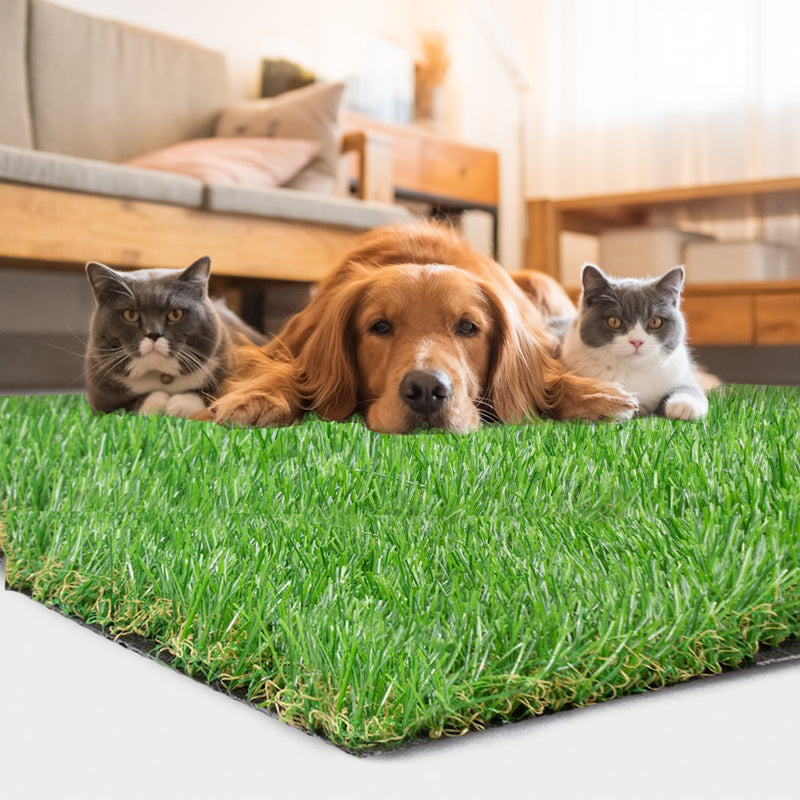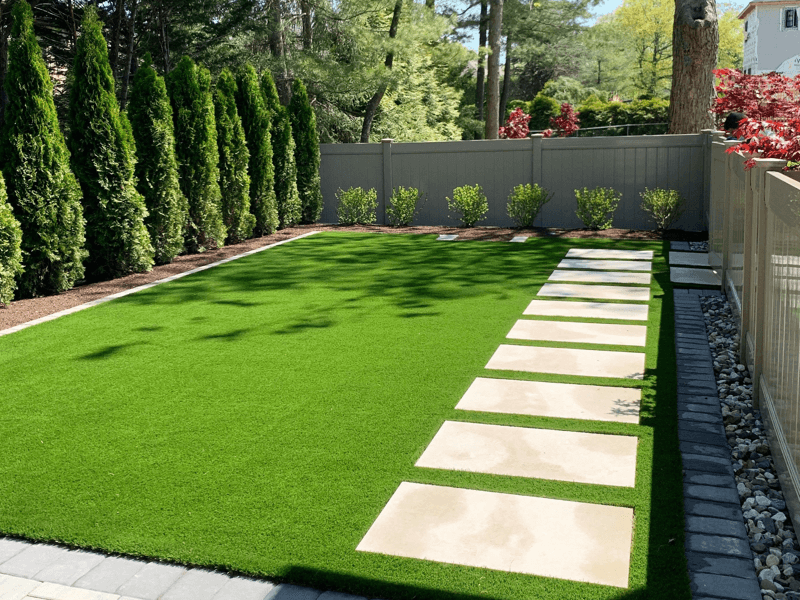Explore the Environmental Perks of Opting for Synthetic Grass Solutions
The fostering of synthetic grass solutions presents a compelling possibility to resolve pushing environmental obstacles. By dramatically minimizing water usage and decreasing the application of damaging chemicals, these choices not only promote lasting landscaping but also protect local environments.
Water Conservation Conveniences
One of the most significant advantages of artificial grass is its capability to preserve water. In comparison, synthetic turf does not require watering, significantly reducing the total need for water sources.
By removing the demand for routine watering, artificial grass adds to sustainable landscape practices and assists minimize the ecological influence of excessive water usage. Moreover, the conservation of water includes the decrease of drainage, which can lead to dirt erosion and river air pollution.
Additionally, the setup of man-made turf enables districts and homeowners to assign water resources much more effectively, focusing on important uses such as drinking water and farming. The shift towards synthetic grass not only advertises accountable water usage but likewise straightens with more comprehensive ecological objectives targeted at protecting natural sources.
As areas progressively prioritize sustainability, the water conservation advantages of fabricated turf offer an engaging situation for its fostering in property and commercial landscaping projects.
Reduced Chemical Use
The transition to man-made grass substantially reduces the dependence on chemical therapies typically used in all-natural yard upkeep. Standard turf monitoring usually includes the application of herbicides, pesticides, and fertilizers to promote growth and control parasites. These chemicals can position threats to human health and wellness, regional wild animals, and the environment, adding to soil and water contamination.
In comparison, synthetic grass gets rid of the demand for these unsafe compounds. As soon as installed, it calls for very little maintenance, mostly containing routine cleansing and occasional infill replenishment. This decrease in chemical usage not just profits the immediate atmosphere yet also adds to wider ecological stability. By lessening the launch of synthetic substances right into the community, artificial grass advertises much healthier dirt and water systems.
Furthermore, the lack of chemical overflow connected with man-made grass setups aids protect neighborhood waterways from contamination, supporting aquatic life and keeping biodiversity. Artificial turf companies phoenix. As neighborhoods progressively prioritize sustainable techniques, deciding for synthetic grass offers a practical service that aligns with environmental conservation goals. Via this change, building proprietors can appreciate rich eco-friendly rooms without endangering environmental health, leading the way for a more lasting future
Lower Carbon Footprint

In addition, the installation of synthetic grass can lead to substantial water conservation. All-natural grass require considerable quantities of water for watering, which not only adds to the carbon impact connected with water removal and therapy but also stress neighborhood water resources. On the other hand, synthetic grass needs very little maintenance, needing no watering, therefore dramatically reducing water usage and its associated energy prices.
In addition, the longevity of synthetic grass adds to its decreased carbon impact. With a life expectancy my response of up to 15 years or even more, the demand for constant substitutes is lessened, resulting in less waste and reduced power intake in manufacturing and throwing away typical yard alternatives. Overall, artificial grass presents a lasting more helpful hints alternative for ecologically mindful landscape design.
Environment Conservation
Environment conservation is an important consideration in the debate over landscape design selections, particularly when comparing synthetic grass to natural turf. All-natural yard lawns frequently call for comprehensive upkeep, including the usage of chemicals, herbicides, and plant foods, which can detrimentally impact neighborhood ecosystems. These chemicals can leach right into the dirt and waterways, damaging native plants and fauna and interrupting regional environments.
In contrast, fabricated grass provides a chance to decrease the ecological footprint of landscaping. By choosing artificial grass, homeowners can reduce the disturbance of natural habitats connected with typical yard treatment techniques. Synthetic grass gets rid of the need for unsafe chemicals, thus protecting close-by wildlife and preserving the integrity of bordering environments. The installation of fabricated grass can lead to the conversion of previous lawn locations right into even more biodiverse landscapes, such as pollinator yards or native plant locations, which can sustain local wildlife.
Inevitably, the transition to synthetic grass not only conserves water and reduces maintenance efforts however additionally fosters a more unified connection between human tasks and the native environment, promoting habitat conservation in the process.
Long-Term Sustainability
Long-lasting sustainability is a critical consider evaluating the benefits of synthetic grass over traditional turf yards. Among one of the most substantial advantages of synthetic grass is its sturdiness; it can last up to 15-20 years with minimal upkeep, whereas all-natural turf requires frequent reseeding and substitute. This long life lowers the demand for consistent resources, such as water, plant foods, and pesticides, which are crucial for preserving a healthy grass lawn.
Furthermore, artificial lawn adds to a reduction in carbon exhausts connected with grass care equipment. Typical grass typically require gas-powered mowers, trimmers, and blowers, every one of which contribute to air contamination. Arizona turf. In contrast, synthetic grass removes the need for such equipment, promoting a cleaner environment
Furthermore, the production of synthetic grass progressively utilizes recycled materials, boosting its sustainability profile. As makers adopt eco-friendly methods, the environmental footprint of synthetic grass proceeds to decrease.

Verdict
The adoption of synthetic turf remedies offers substantial environmental advantages, consisting of substantial water preservation, reduced dependence on damaging chemicals, and a lower carbon footprint. Fabricated grass aids in preserving natural habitats by lessening land disturbance and advertising long-lasting sustainability through the use of durable products. Jointly, these aspects underscore the potential of synthetic grass Read Full Article to add favorably to ecological health and wellness and offer a viable choice to typical landscape design techniques in a significantly resource-conscious world.
In comparison, synthetic grass does not need watering, dramatically lowering the general demand for water sources. By minimizing the launch of artificial substances right into the ecological community, artificial turf advertises healthier soil and water systems.
Furthermore, the setup of synthetic lawn can result in considerable water preservation. In contrast, fabricated grass requires minimal maintenance, calling for no watering, therefore considerably lowering water usage and its connected energy prices.
